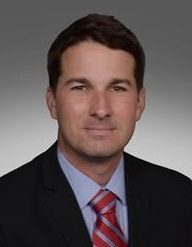Environmental health and safety (EHS) requirements continually change but rarely decline in number. Regulatory bodies continually refine existing standards, publish new rules and shift the focus of their enforcement activities to enforce new rules. A quick glance at the total inspections conducted by the U.S. Occupational Health and Safety Administration (OSHA) shows that unprogrammed inspections have increased in recent years even as programmed inspections have declined.
Penalties for OSHA violations remain significant, ranging from $12,934 per violation to $129,336 for willful or repeated incidents. And penalties represent only a portion of the problems companies incur due to ineffective EHS processes and capabilities. Other potential problems include hits to shareholder value, brand and reputational damage, lawsuits, and scrambling to carry out expensive mandated remediation while dealing with the fallout.
The worst-case scenarios are more likely to occur in companies with ineffective EHS programs, which tend to be underfunded and focused on lagging indicators (such as days without injuries or incidents). Establishing an effective and continuously improving EHS capability with leading indicators, such as percentage of employees who have received adequate training, for example,is a great way to avoid these issues.
Mature EHS programs help companies keep tabs on new and enforceable regulations, integrate an EHS mind-set into the company culture, and help support and manage corporate sustainability initiatives.
Although the number of days between workplace mishaps can be a useful benchmark, tracking past incidents is rarely as helpful as a forward-looking stance. Leading indicators and metrics play a key role in high-performing EHS programs. To develop such a program, business leaders should start by gaining a clear understanding of their current capabilities and the maturity of their EHS program. A well-established program not only helps prevent incidents and fines but also promotes compliance, safety and even pride throughout the organization.
Mature EHS programs share some or all of the following characteristics:
The right tone at the top – Organizational leadership should inspire the right attitudes and behaviors regarding how EHS requirements are viewed and managed throughout the company.
EHS considerations are integrated into routine processes – Rather than addressing EHS standards and rules after the fact, leading companies have compliance requirements and other EHS practices integrated into processes.
Comprehensive training – Compliance with all relevant regulations, rules and internal standards is supported with training that extends to safety procedures, equipment use, compliance-reporting requirements and more.
Use of leading indicators – Mature programs identify, monitor and respond to leading indicators that highlight potential trouble spots so that incidents can be prevented. Examples of leading indicators include the percentage of employees who have received adequate training; the number of compliance-related visits to a site, the number of management visits to a site, etc.
Performance tracking – Leading EHS teams develop and implement performance plans with metrics related to key EHS requirements and standards.
Benchmarking – In addition to tracking key performance indicators (KPI), leading EHS programs also conduct regular benchmarking activities to assess their performance against industry yardsticks.
Integration with functional and business processes – EHS teams collaborate closely with business partners throughout the organization on any and all processes related to EHS matters.
Collaboration and planning – EHS teams work with corporate finance and accounting teams in a proactive and forward-looking manner and ensure that EHS initiatives and requirements are included in the annual budgeting and planning processes.
Getting these and other components of a robust EHS capability in place normally begins with a diagnostic of the program’s current state. Protiviti has published a white paper that provides insights into how to initiate an objective assessment and advance the EHS program along the maturity spectrum. It can be downloaded, free, here. We are also interested in your experiences improving your EHS program – share in the comment section below or reach out to us on our website.






